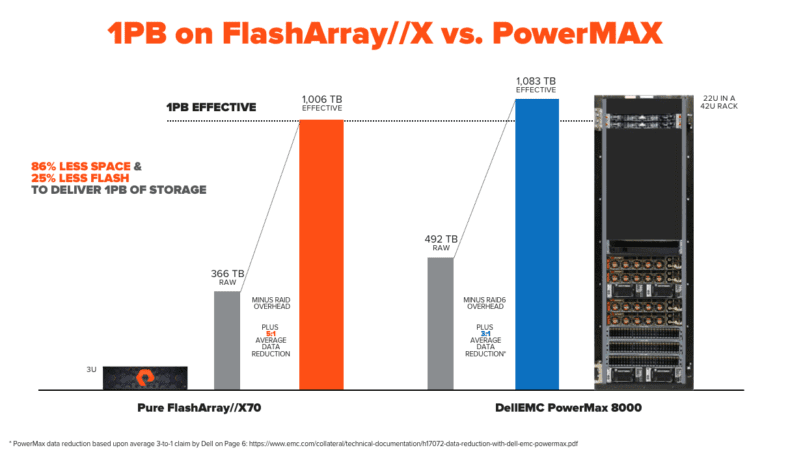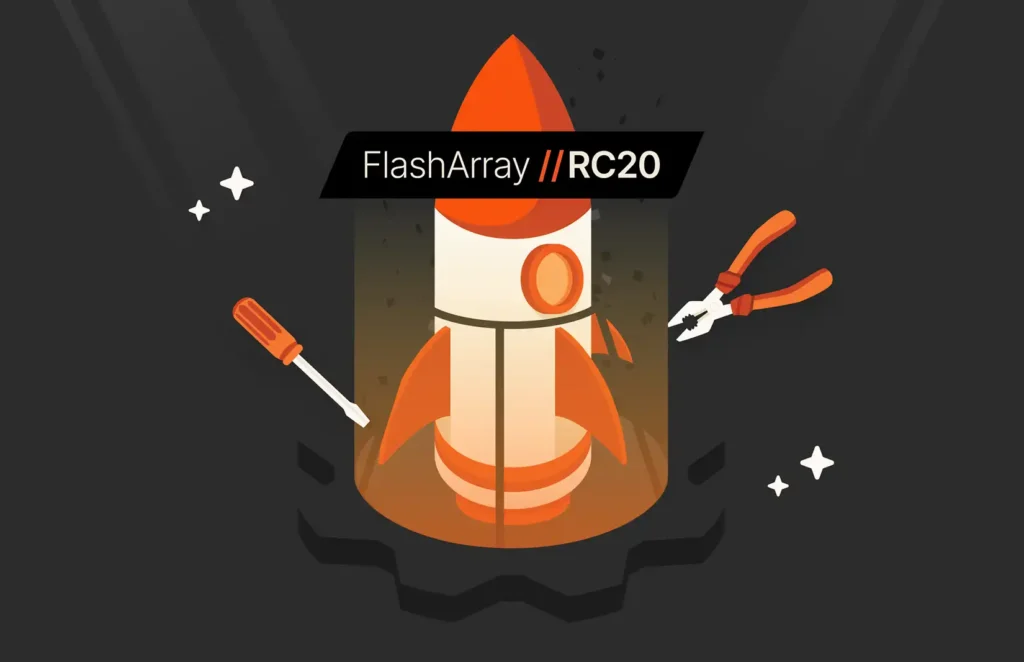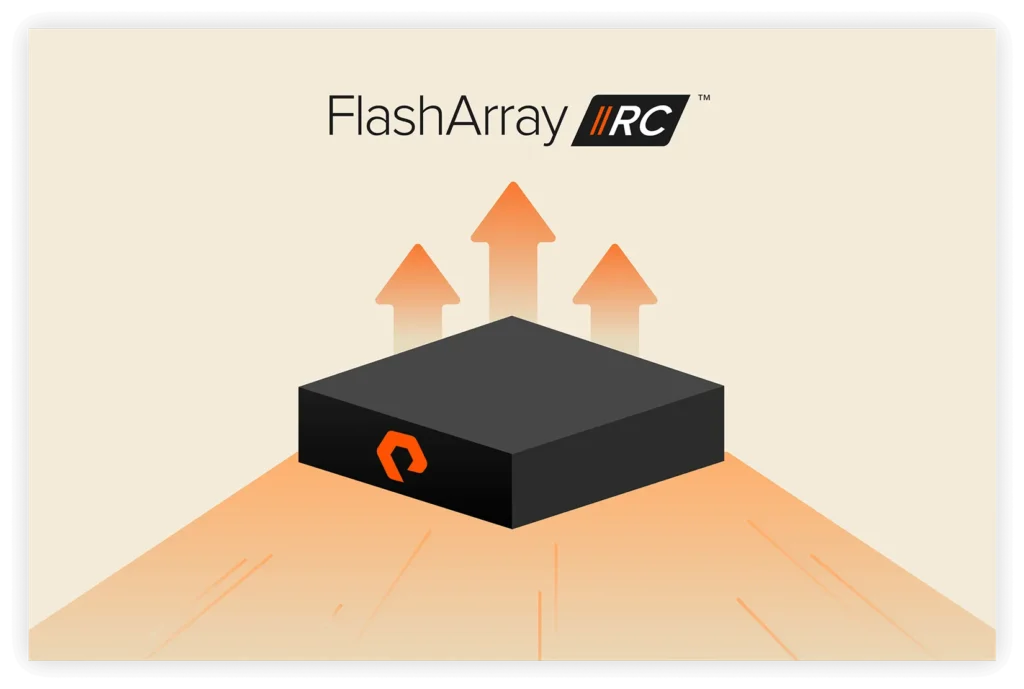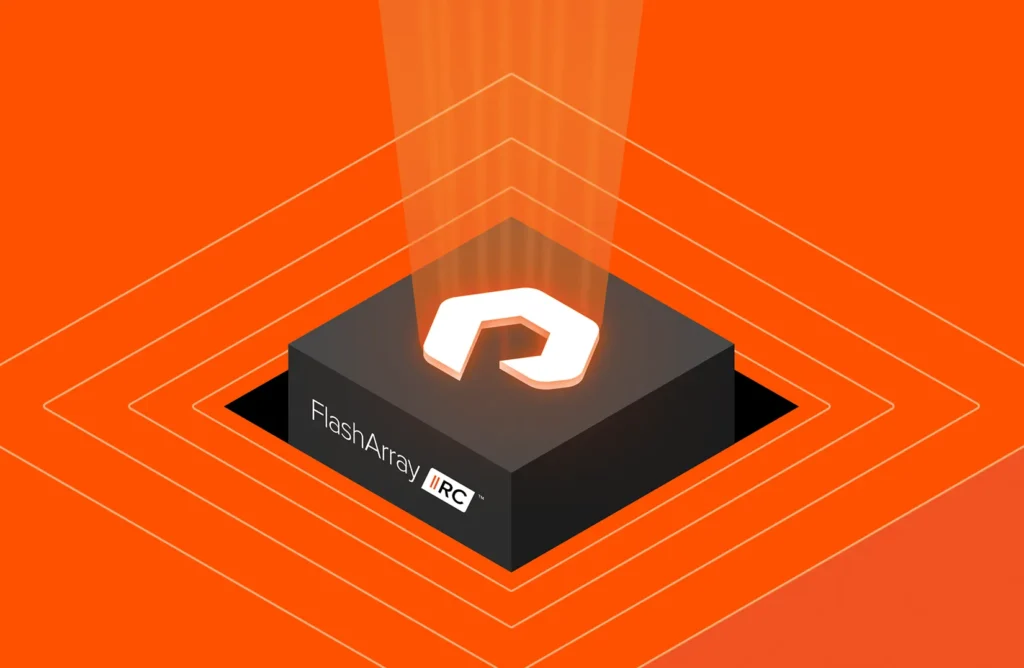It’s 2018, and we’re excited to see the transition to all-NVMe storage is really gathering steam! In fact it gives us a little bit of nostalgia for the early days of Pure, when we pioneered the all-flash array, and it took the industry a little bit of time to get beyond tiering and catch-on to what was so special about an AFA. Truth be told, we could have never created the AFA category entirely on our own, and the AFA transition really got moving when the Big Storage incumbents started building AFA retrofits and convincing the mass market it was time to move to the better storage model of the time: AFA. Market entry (aka validation) from the big incumbents only accelerated Pure’s growth and adoption, ultimately helping us become the fastest-growing IT infrastructure company of all time! I’m hopeful that Big Storage (er… Big Server) entering the all-NVMe storage market will provide the same growth catalyst!
We started the NVMe journey at Pure in 2015 when we first launched FlashArray//M with dual-ported NVMe NV-RAM devices, and wired our chassis for NVMe before the standard was even finalized. Engineering for evergreen upgrades is a core part of our DNA at Pure. We then took the strategy of leading the transition to NVMe, announcing FlashArray//X a year ago as the first enterprise-class all-NVMe array:
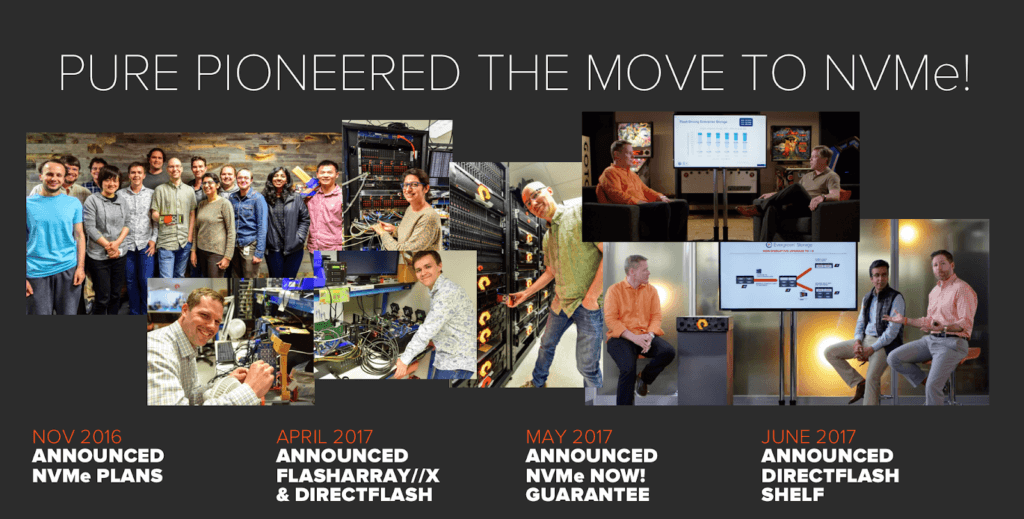
As we announced in our last earnings call, NVMe is about 20 percent of our business already, and it’s actually pretty exciting to see others start to jump in. But just like the AFA transition, I believe there will be a few predictable outcomes of this transition as well:
- Vendors will mistakenly position NVMe as a “Tier 0” performance technology, with a price point to match. NVMe will only have a chance of going mainstream if it’s affordable.
- Vendors will retrofit their products for NVMe instead of doing the tough work to optimize the entire data path for it, leaving performance improvement and efficiency opportunities behind.
- Vendors will ship new products that are forklift upgrades to NVMe vs. evolving their current products, further inhibiting transition.
- Just like with AFA, the transition will ultimately come down to software: how optimized the software stack in the array can become for what NVMe makes possible.
So without further ado, let’s jump into our key observations and a few surprises from Dell’s big all-NVMe launch:
Dell’s betting big on NVMe: Bring it on!
As we said in the intro, it’s exciting to see Dell jump into NVMe with both feet. It will only serve to catalyze mainstream customer interest in the technology. We were surprised, for one, to see VMAX All-Flash removed completely from the website: it appears VMAX is going all-NVMe! Does this mean that disk configurations of the VMAX are gone completely, with disk now relegated to the mid-market Unity and SC/Compellent? If so, that’s big news.
What may be less exciting for customers, is that there’s no direct upgrade path from the All-Flash VMAX (or any other VMAX) out in the market. Despite the fact that PowerMax is essentially the same product with an all-NVMe disk shelf and a software update, no upgrade path other than a full forklift upgrade and a data migration to new hardware was announced for the user base. That’s not a particularly rosy path to NVMe, and certainly one that would violate Pure’s evergreen principles.
The family confusion…remains.
We were hopeful for customers that this would be the year (2+ years post-merger) that Dell finally came forward with their all-flash product rationalization plans. VMAX (PowerMax), Unity, SC/Compellent, and of course XtremIO all still remain — four AFAs to cover the market, without even mentioning HCI and SDS options. In fact with zero fanfare, a new version of XtremIO software was even released! This puts customers in a difficult spot, as it’s another year of multiple array choices for each workload, with the fear that the product you pick is the one eventually rationalized.
Re-naming VMAX/Symmetrix: the end of (several) eras.
As a storage lifer, I hate to admit that I feel a bit sad to see the final end of the VMAX/Symmetrix family naming – a name that has been a bedrock in enterprise storage for 3 decades. I do think it’s an interesting window, however, into the mindset at Dell – that pushing for consistent naming across disparate product lines is more important than preserving, leveraging, and ultimately rejuvenating what is arguably the most valuable brand name in all of storage. I’ll also say that the PowerMax name reminds me of a few different things – unfortunately none of them high-value enterprise storage.
VMAX is re-born for NVMe. Or is it?
Dell is marketing PowerMax as a new all-NVMe array, but a slight look beyond the glossy cover shows a lot of similarities between VMAX All-Flash & PowerMax. In short, the PowerMax is a renamed VMAX All Flash, with the PCIe SAS interface replaced by a PCIe NVMe interface; and the SAS DAEs replaced with NVMe DAEs. Dell also added a hardware accelerated inline compression card, and improved the deployment density of the PowerMax 8000.
But if you look a bit deeper, you find many similarities and vestiges of the past:
- Both products share essentially the same controllers, with just a modest CPU speed bump in the same generation of CPUs;
- Although some impressive performance specs were shared, these are all based upon “cache-hit” reads, or the PowerMax just serving storage directly from DRAM cache and not hitting NVMe flash at all … so we really have no idea how fast the all-NVMe part of the “new” VMAX is!
- Both products have the same max bandwidth specs, meaning that adding NVMe didn’t seem to have an impact on the max throughput of the system?
- Compression and dedupe has been added, but instead of doing it natively in the software, it’s via an add-on data reduction card. If anyone is interested in seeing the complexity of data reduction add-on, just peruse this 19-page white paper on how simple data reduction retrofitting can be!
- Dell is re-casting its Fully Automated Storage Tiering (FAST) as machine learning, a feature that has been in the VMAX family for a long while now;
- Both the VMAX and PowerMax “feature” non-disruptive migrations, but the ultimate goal should be no migrations at all. Why should customers need to migrate data, and be forced to buy a product all over again each time a new generation of controllers come out?
A stark difference in efficiency.
Just like with AFA, the move to NVMe is going to be accelerated or gated not based upon hero performance benchmarks, but on mainstream elements like enterprise-level resiliency, features, and efficiency. If it’s not affordable, it just won’t be adopted other than for high-end niche workloads (see DSSD, Fusion-IO, and Violin).
At Pure, we focused our journey to NVMe on using the technology to interface our Purity software directly with raw NAND flash, using our innovative DirectFlashTM architecture. The result is not only higher performance, but dramatically higher efficiency.
Sometimes a picture is worth 1,000 words, so check out this simple compare of how much infrastructure is required to deliver 1 PB of usable flash from Pure’s FlashArray//X vs. PowerMax:
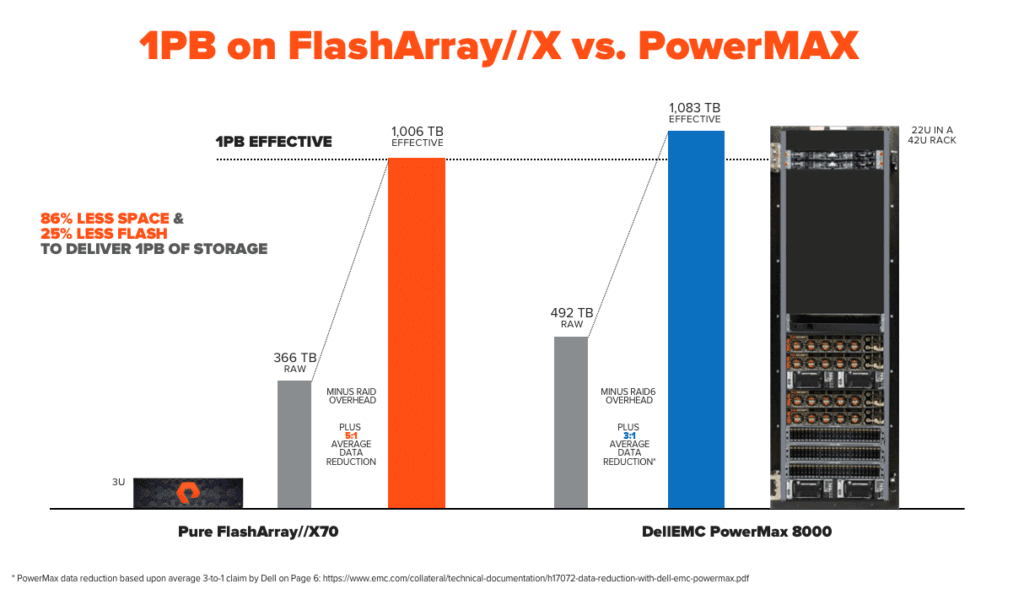
As you can see, the FlashArray//X delivers 1PB in 86% less space and with 25% less raw flash — and this was the product we released LAST year. Just wait and see what we have this year!
In Summary
It’s exciting to see Dell jump into the all-NVMe party, and I hope we see NetApp, HPE, and others do so soon as well. Our mission at Pure is to accelerate the adoption of NVMe to not just make it a “Tier 0” technology, but to make it available for every mainstream storage workload. As you can imagine – we have a few tricks up our sleeves to share at our user conference Pure //Accelerate. Join us in San Francisco in 3 short weeks!
